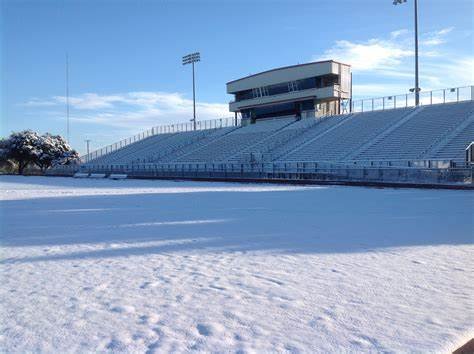How to Keep Your Professional A/V Gear Safe in Cold Weather
Cold weather presents unique challenges for outdoor stadiums, and other venues that rely on professional audio and video (A/V) equipment. Extreme temperatures can wreak havoc on sensitive electronics, batteries, and cables, potentially leading to costly repairs, downtime, or equipment failure. For venue managers, ensuring the reliability of A/V gear during colder months is crucial to providing seamless events and protecting your investment. Here’s how to safeguard your gear and keep operations running smoothly when the temperature drops.
1. Understand How Cold Weather Impacts Your Gear
Extreme cold can affect your equipment in several ways:
Condensation: Shifting between cold outdoor environments and warm storage areas can create moisture that damages internal components.
Battery Performance: Wireless microphones, cameras, and other battery-powered devices lose charge faster in the cold, reducing runtime.
Cable Durability: Rubber and plastic cables may become brittle and crack when exposed to low temperatures or frequent handling.
Display Functionality: LCD screens can freeze or become sluggish, making them harder to operate.
2. Prepare Before the Cold Hits
Taking preventive steps before events can save you from unexpected issues:
Use Protective Cases: Invest in insulated, weather-resistant cases to shield your gear from temperature extremes and moisture.
Pack Desiccants: Include silica gel packs in storage cases to absorb moisture and reduce condensation risks.
Fully Charge Batteries: Start with fully charged batteries and bring spares, keeping them warm until needed.
Inspect Your Equipment: Before the season begins, check for vulnerabilities like frayed cables, outdated batteries, or damaged connectors.
3. Protect Your Gear During Events
While your venue is hosting events in cold weather, follow these best practices:
Use Thermal Covers: Equip cameras, microphones, and other devices with thermal wraps to maintain consistent operating temperatures.
Elevate Equipment: Keep gear off wet or icy ground using tripods, stands, or protective mats.
Monitor Power Levels: Rotate cold batteries with warm spares to avoid interruptions.
Shield Cables and Connectors: Use durable cable covers to prevent cracking and protect connections from snow, ice, or water exposure.
4. Handle Temperature Transitions Carefully
Sudden temperature changes can lead to condensation and damage:
Allow Equipment to Warm Gradually: Leave gear in its case when moving indoors so it can acclimate slowly.
Wipe Down Gear: Remove any visible moisture before storing your equipment.
5. Optimize Off-Season Storage
Proper storage during the colder months can extend the life of your equipment:
Choose Climate-Controlled Storage: Keep A/V gear in a temperature-regulated, dry environment to prevent damage from cold or humidity.
Use Dehumidifiers: If your storage area is prone to dampness, a dehumidifier can protect your electronics.
Inspect Periodically: Regularly check for signs of wear, damage, or corrosion and address any issues promptly.
6. Invest in Weather-Resistant Gear
If your venue regularly hosts events in challenging climates, consider upgrading to A/V equipment designed for cold weather. Many manufacturers offer rugged, weather-resistant options built to withstand extreme conditions, ensuring dependable performance no matter the temperature.
Final Thoughts
Protecting your A/V gear from cold weather is more than just good practice—it’s an investment in the success of your events and the longevity of your equipment. With proper preparation, smart on-site practices, and attention to storage, you can avoid unnecessary downtime and deliver exceptional experiences for your audience year-round. By taking these steps, your venue will be ready to tackle the challenges of winter while maintaining the highest quality standards.
